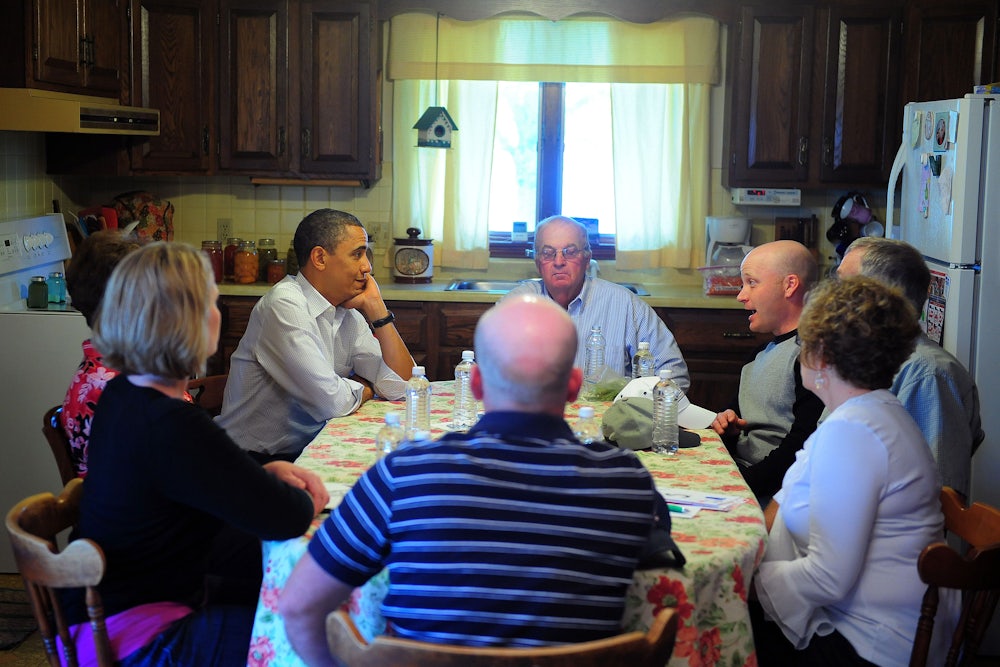Andy Beshear wasn’t meant to be the next governor of Kentucky. Shortly after he won the Democratic nomination in May, Matt Bevin, the Republican incumbent, was leading by a comfortable 6 points in the polls. Beshear, however, made a crucial choice early in the race. He didn’t rail against President Donald Trump. He talked of jobs, health care, and pay raises for schoolteachers. And when he won in a close November election, pundits said it was because he had focused on “kitchen-table issues,” a term that seems, broadly, to encompass any issue voters consider important.
The kitchen table was a rhetorical battleground in 2008, in 2012, and it will be again in 2020. The phrase is the current metaphorical substitute for what were once called “bread and butter issues,” like wages and the rising price of milk. Focusing on such matters showed that you were in touch with regular people; at the very least, it showed that, unlike George H.W. Bush, who marveled at the bar codes on groceries in 1992, you’d done your own shopping sometime in the last half-century.
The expression itself was popularized in the months before the 1988 Iowa caucuses. Sarah Harder, the president of the American Association of University Women, used it to refer to affordable housing, subsidized child care, eldercare, and pay equity. Her point was that these issues disproportionately burdened women, but should not be pigeonholed as “women’s issues.” They were at “the center of American life.”
The “kitchen table,” as Harder used it, was a place where bills were paid and relatives cared for, a domain of women whose interests politicians had long ignored. But in a sense, Harder was engaging in a bit of rebranding. The Democrats were increasingly wary of such hot-button “women’s issues” as abortion rights and the Equal Rights Amendment; instead, they wanted to convey “nonideological competence,” as one reporter put it in 1988.
As a result, when Massachusetts Governor Michael Dukakis won the Democratic nomination that summer, his campaign signaled that they would use their convention to focus on “kitchen table issues,” a term so new that Paul Taylor, a Washington Post reporter, put it in scare quotes. For Dukakis’s campaign, this meant “pragmatic, nonideological government activism.” Judy Mann, a Post columnist, put it this way: “The kitchen table is not where you discuss aid to the contras.” It was—literally and figuratively—small. And by talking it up, Democratic candidates could avoid being tarnished as overzealous “liberals” and address health or education without wading into thorny ideological debates.
Conservatives were more adept at leveraging the kitchen table in those debates. In 1993, the conservative Health Insurance Association of America produced the “Harry and Louise” spots, which featured a white suburban couple discussing health reform around their kitchen table. The table is Louise’s domain, an echo of the kitchen table’s link to “women’s work.” While Harry reads the newspaper, it is his anguished wife who reads the doorstop health bill and delivers the most cutting lines. Despite Democrats’ efforts to insist otherwise in 1988, the kitchen table was ideological: Harry and Louise attacked publicly funded health care as an intrusion of “the government” into their private decisions. In short order, the kitchen table became a fortress, keeping the government, and our fellow citizens, out.
